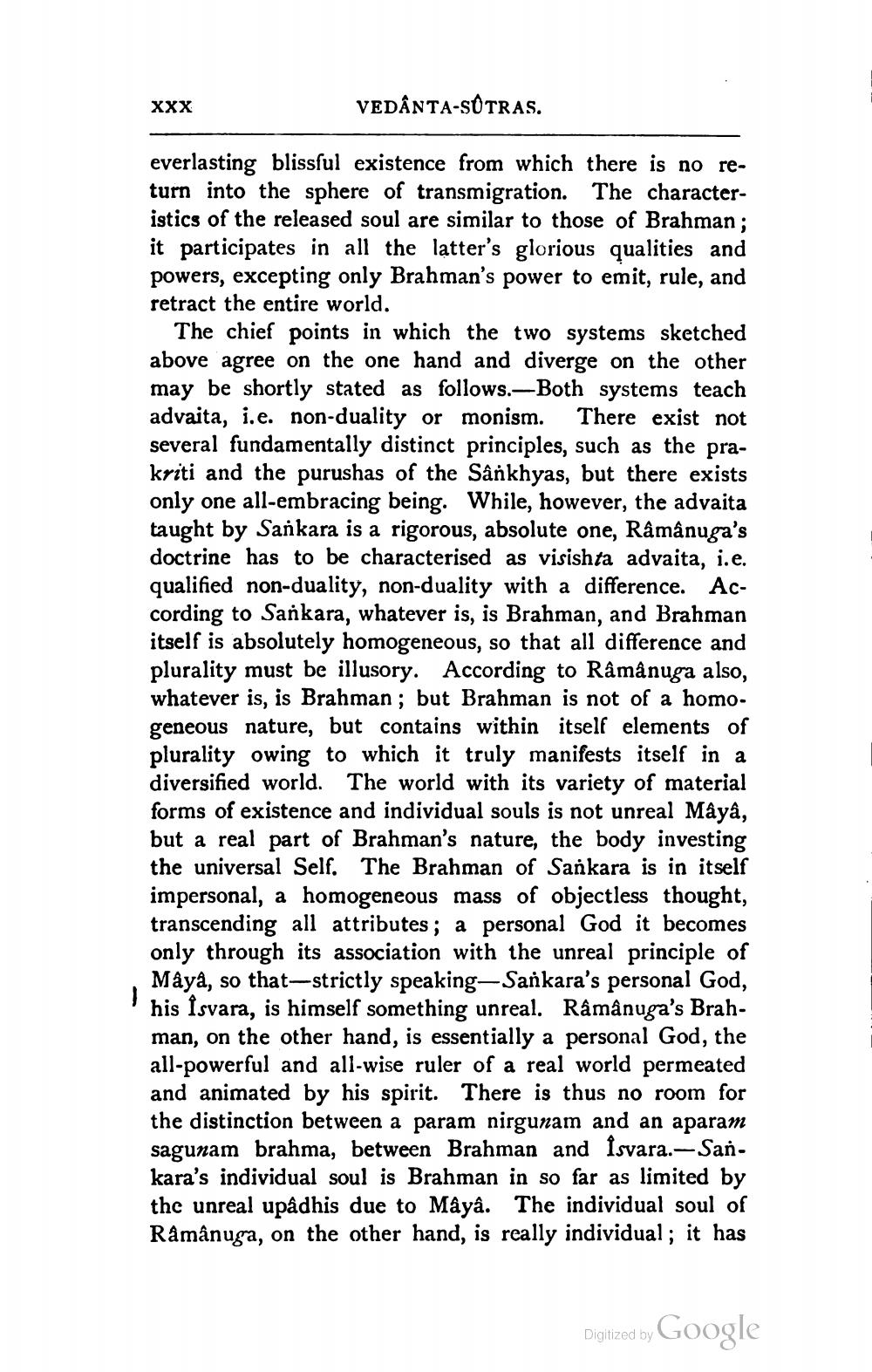________________
XXX
VEDÂNTA-SOTRAS.
everlasting blissful existence from which there is no return into the sphere of transmigration. The characteristics of the released soul are similar to those of Brahman; it participates in all the latter's glorious qualities and powers, excepting only Brahman's power to emit, rule, and retract the entire world.
The chief points in which the two systems sketched above agree on the one hand and diverge on the other may be shortly stated as follows. Both systems teach advaita, i.e. non-duality or monism. There exist not several fundamentally distinct principles, such as the prakriti and the purushas of the Sânkhyas, but there exists only one all-embracing being. While, however, the advaita taught by Sankara is a rigorous, absolute one, Râmânuga's doctrine has to be characterised as visishta advaita, i.e. qualified non-duality, non-duality with a difference. According to Sankara, whatever is, is Brahman, and Brahman itself is absolutely homogeneous, so that all difference and plurality must be illusory. According to Râmânuga also, whatever is, is Brahman; but Brahman is not of a homo. geneous nature, but contains within itself elements of plurality owing to which it truly manifests itself in a diversified world. The world with its variety of material forms of existence and individual souls is not unreal Mâyâ, but a real part of Brahman's nature, the body investing the universal Self. The Brahman of Sankara is in itself impersonal, a homogeneous mass of objectless thought, transcending all attributes; a personal God it becomes only through its association with the unreal principle of Mâyà, so that-strictly speaking—Sankara's personal God, his Isvara, is himself something unreal. Râmânuga's Brahman, on the other hand, is essentially a personal God, the all-powerful and all-wise ruler of a real world permeated and animated by his spirit. There is thus no room for the distinction between a param nirgunam and an aparam sagunam brahma, between Brahman and Isvara.-Sankara's individual soul is Brahman in so far as limited by the unreal upâdhis due to Maya. The individual soul of Râmânuga, on the other hand, is really individual; it has
Digitized by Google




